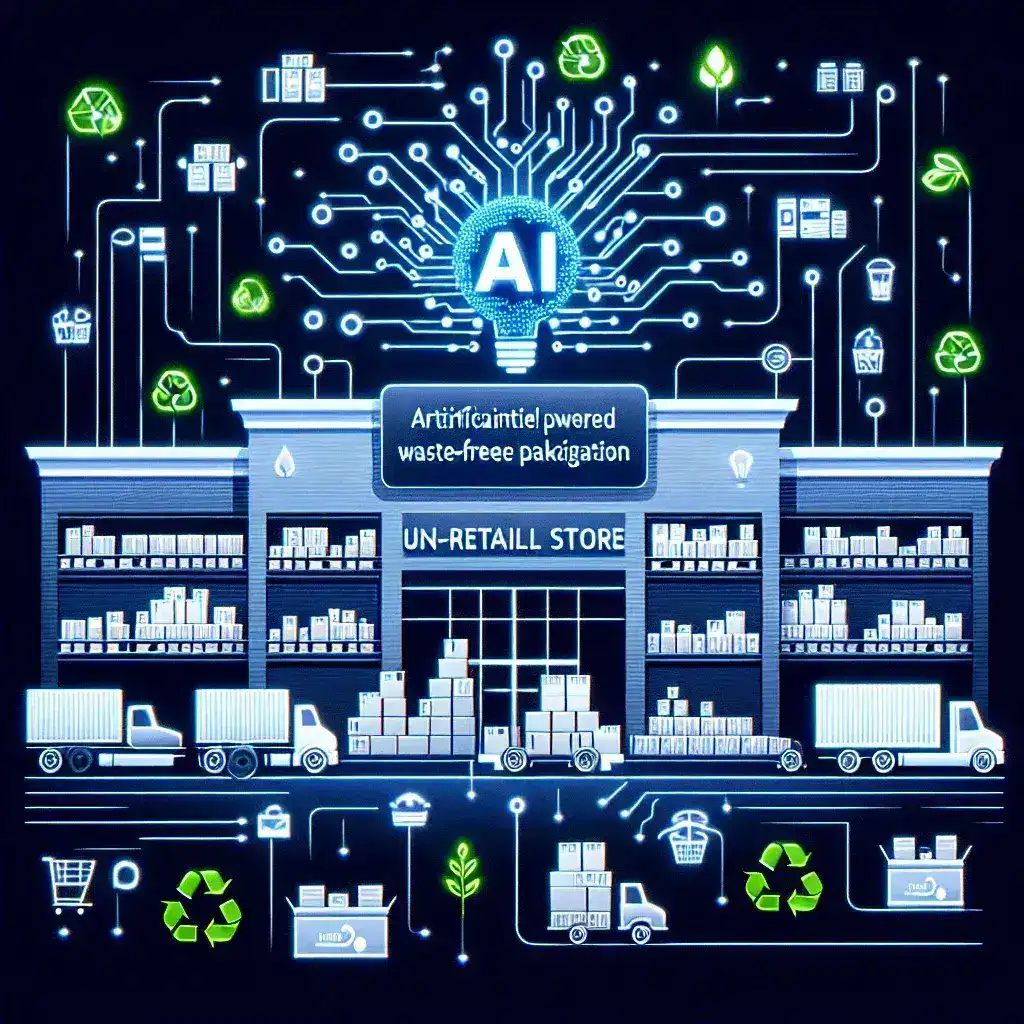Walmart’s Innovative Move Towards Waste-Free Packaging
In a significant shift towards sustainability, Walmart is piloting an AI powered waste-free packaging optimization initiative in its U.S. stores. This groundbreaking approach aims to minimize waste, improve packaging efficiency, and contribute to a more sustainable future. With growing concerns over environmental impact, Walmart is taking steps to lead the industry in eco-friendly practices, setting a precedent for other retailers to follow.
The Need for Sustainable Packaging
The packaging industry is one of the largest contributors to waste, with billions of tons of materials ending up in landfills each year. As consumers become increasingly aware of environmental issues, businesses are feeling the pressure to adopt more sustainable practices. Walmart’s commitment to reducing packaging waste is not only a response to consumer demand but also a strategic move to enhance its brand image and operational efficiency.
How AI is Transforming Packaging Optimization
Walmart’s use of artificial intelligence in packaging optimization represents a significant leap forward in the retail sector. The AI algorithms analyze various factors, including product dimensions, shipping requirements, and consumer preferences, to devise the most efficient packaging solutions. Key benefits of this approach include:
- Reduction in Material Waste: By optimizing packaging sizes and materials, Walmart can significantly reduce the amount of excess packaging that contributes to landfill waste.
- Cost Efficiency: Streamlined packaging processes lead to lower shipping costs and improved inventory management.
- Enhanced Customer Experience: AI-driven packaging can improve the overall shopping experience by ensuring products arrive safely and in optimal condition.
A Step-by-Step Look at the AI Implementation
The implementation of AI in Walmart’s packaging processes involves several steps:
1. Data Collection
Walmart gathers extensive data on product dimensions, customer feedback, and historical shipping practices. This data forms the foundation for AI analysis.
2. AI Analysis
Using advanced algorithms, the AI evaluates packaging options and determines the best materials and sizes for each product, aimed at minimizing waste.
3. Test Runs
Before full-scale implementation, Walmart conducts test runs to assess the efficiency of the new packaging strategies and make any necessary adjustments.
4. Rollout
Upon successful testing, the optimized packaging solutions are rolled out across various U.S. stores, with continuous monitoring and adjustments based on real-time data.
Challenges and Considerations
While Walmart’s initiative is promising, it is not without challenges. Some of the key challenges include:
- Consumer Acceptance: Customers need to adapt to new packaging styles, which may require education and awareness campaigns.
- Cultural Factors: Different regions may have varying preferences for packaging, necessitating localized strategies.
- Technological Limitations: The effectiveness of AI heavily relies on the quality of data available, and ensuring data accuracy will be crucial.
Future Predictions for Packaging Optimization
The pilot program is expected to provide valuable insights into the future of packaging in retail. Analysts predict that as AI continues to evolve, its applications in packaging optimization will expand, potentially leading to:
- More Personalized Packaging: Tailoring packaging to individual customer preferences based on shopping behavior.
- Increased Use of Recyclable Materials: A shift towards sustainable, recyclable materials will likely become the norm for major retailers.
- Broader Industry Impact: If successful, Walmart’s approach may inspire other retailers to adopt similar AI-driven strategies, creating a ripple effect throughout the industry.
Walmart’s Commitment to Sustainability
Walmart has long been an advocate for sustainability, committing to ambitious goals such as achieving zero waste in its operations and reducing greenhouse gas emissions. The introduction of AI-powered waste-free packaging optimization aligns seamlessly with these overarching goals, demonstrating the company’s dedication to environmental stewardship.
Real-World Examples of AI in Action
As part of its pilot program, Walmart is already seeing promising results in select stores. For instance, in a trial conducted in New York, AI-optimized packaging reduced waste by 20%, showcasing the potential impact of this technology.
Expert Opinions on the Initiative
Industry experts are optimistic about Walmart’s initiative. According to Dr. Emily Roberts, an environmental scientist, “Walmart’s move towards AI-driven packaging solutions not only showcases innovation but also sets a benchmark for sustainability in retail. This could pave the way for a significant reduction in packaging waste across the industry.”
Conclusion: A New Era of Packaging
Walmart’s piloting of AI powered waste-free packaging optimization marks a pivotal moment in the retail sector’s journey towards sustainability. By leveraging advanced technology, the company is not only addressing environmental concerns but also enhancing its operational efficiency and customer satisfaction. As this initiative unfolds, the retail landscape may very well witness a transformation that prioritizes sustainability, setting new standards for future practices.

Leave a Reply